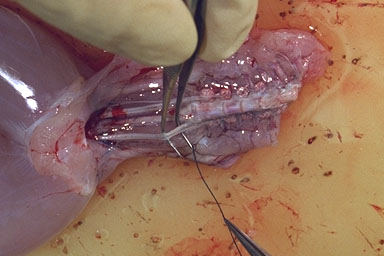
Free the sciatic nerve from surrounding tissue by cutting the surrounding tissue parallel to the nerve being careful not to cut the nerve. After the portion of the sciatic nerve in the abdomen has been freed of other tissue, slide small curved forceps underneath the sciatic nerve near its insertion into the spinal cord, attach surgical thread to forceps and pull through. Tie off one of the sciatic nerves at the backbone where it leaves the spinal cord, leaving about 2 inches of thread attached for later use. Cut the nerve between the knot of thread and the spinal cord.
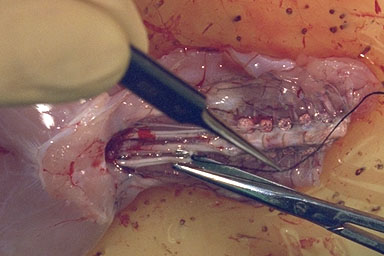
Free the portion of the nerve in the abdomen from all surrounding tissue from the part attached to the thread down to the hip joint. Try to minimize bleeding when you dissect the nerve. Often the smaller vessels can be crushed with a hemostat and then safely cut without causing much bleeding. If you inadvertently cut a large vessel, clamp it shut with a hemostat and wash away the blood with frog Ringer's solution. Be sure to keep the nerve wet at all times.

Dissecting the nerve at the hip is tricky. Switch to the dorsal side (flip the frog over) and expose the nerve in the thigh where it lies deep between the large thigh muscles. To do this, pull apart the two large groups of thigh muscles and pin them down so that their inner sides are exposed. Cut through the overlying membranes and uncover the nerve and the nearby blood vessel.
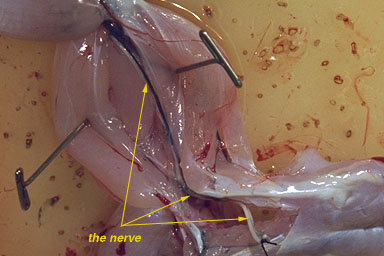
The nerve runs parallel to the blood vessel. Do not remove the vessel, it will be removed once the nerve is completely dissected.
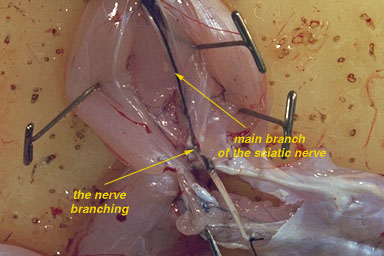
Right below the hip the sciatic nerve branches in two. The smaller branch is the nerve connected to the quad. You may cut this off making sure that you do not touch the main branch that extends towards the knee.
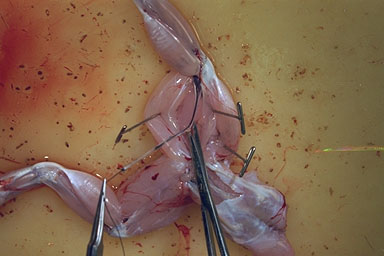
Take your time here and cut parallel to the nerve and detach the tissue from the nerve. Always make certain that the nerve is not between the blades of the scissors when you cut. Tip : For easier dissection of the nerve lift the nerve with forceps at an angle of approximately 45 deg. as shown on the picture. This will expose the tissue that needs to be cut an ensures that you do not accidentally cut the nerve.
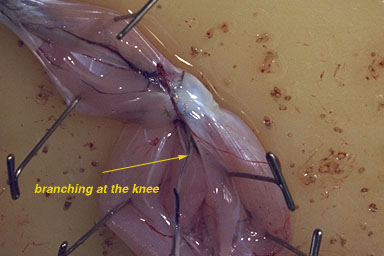
Midway down the thigh the sciatic nerve branches in two. You want the branch that goes above the knee and down to the foot (the peroneal nerve). Separate and pin the muscles of the calf apart. Follow the nerve from the thigh to the knee